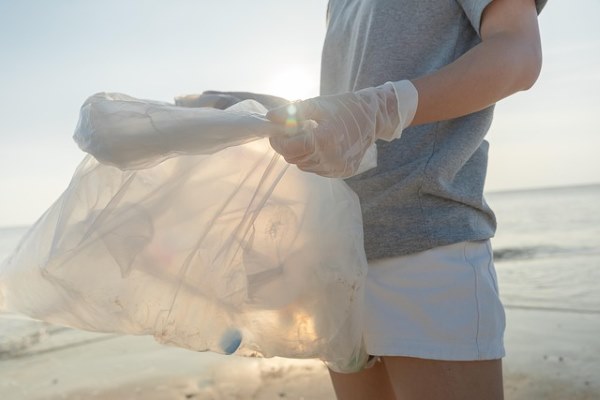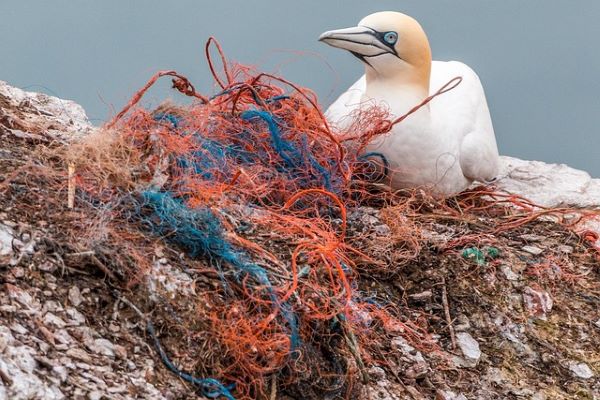Look around you. From the water bottle on your desk to the packaging of your groceries, plastic is the uninvited guest in our modern lives. India now finds itself as one of the world’s largest producers of plastic waste, with a recent government report revealing a staggering annual generation of 4.13 M tonnes. While states like Tamil Nadu, Telangana, and Maharashtra lead this troubling tally, this is not a distant problem for a few; it is a silent, invisible crisis creeping into the very air we breathe, the food we eat, and the water we drink, right here and right now. Yes, plastic and microplastic exposure poses a direct threat to human health.
Emerging Burden of Microplastic Exposure – From Where It Started to Health Hazards
The journey of this crisis begins in our everyday consumption. India’s vast food and grocery market, one of the largest globally, relies heavily on plastic packaging. These materials—polyethylene, polypropylene, and Polyethylene terephthalate (PET)—are designed for convenience, not longevity. But plastic does not vanish when we discard it. Instead, it fractures under the sun and is abraded by wind and rain, slowly breaking down into minuscule fragments or microplastics, the most pervasive environmental contaminant of our time.

Washed by rains and carried by winds, these invisible particles travel from the bustling streets of our megacities to the tranquil banks of our rural rivers, infiltrating our soil and waterways. This is where the crisis becomes personal. These particles are ingested by fish in our seas, by earthworms in our farmlands, and by the livestock in our fields. Most alarmingly, cutting-edge scientific studies are now detecting them in human blood, deep within our lungs, and even in the placentas that nurture unborn children.
Also Read: Know How Plastic Water Tank is Harming your Health
Recent research has revealed that common medical infusion bags can shed microplastics directly into saline solutions, with a single bag potentially delivering an estimated 7,500 polypropylene particles straight into a patient’s bloodstream. Emerging research now suggests that these particles may penetrate even further, with animal studies indicating potential accumulation in tissues like bone and possible impacts on health. While the full spectrum of health implications is still being unravelled, the mere presence of these synthetic particles within our bodies is a deafening alarm bell we cannot afford to ignore.
The health of our people is inextricably linked to the health of our environment
These microplastics carry toxic additives and pollutants that pose a potential risk of inflammation and cellular damage. They threaten the very foundation of our food security by degrading soil health and disrupting aquatic ecosystems, jeopardizing not just biodiversity but also agricultural productivity.
Confronted by this national emergency, a response is taking shape. The recent Plastic Waste Management Rules, 2024, mandate Extended Producer Responsibility (EPR), holding manufacturers accountable for the lifecycle of their packaging. The government’s National Circular Economy Roadmap provides a strategy to reduce landfill waste by promoting sustainable practices.
The Global Waste Management Outlook 2024 by the International Solid Waste Association (ISWA) presents a global portfolio of success stories, emphasizing that collaboration between governments, industry, and communities is not just idealistic—it is essential and effective. In Kerala, an innovative hub-and-spoke model has engaged local councils and women’s self-help groups to recover over 7,500 tons of plastic from more than 100,000 rural households, all while providing fair employment. Similarly, in Nepal, schools have become hubs of change through the Green School Program, where students repurpose waste into resources, funding their activities while building lifelong environmental stewardship. These cases prove that with will and innovation, the tide of plastic pollution can be turned.
Yet, while policy provides the framework, the true power to initiate change lies with every single one of us. The solution begins with a collective awakening and a return to mindful living. It starts with the simple act of refusal—saying no to single-use plastics, carrying your own cloth bag and steel water bottle, and choosing natural fabrics. It continues with responsible disposal, ensuring we segregate waste for recycling and never burn plastic, which releases catastrophic toxins into our shared air.
Therefore, the 4.13 million tonne figure is more than a statistic; it is a stark measure of our challenge and must become the benchmark for our recovery. The path forward is clear: we must support scientific innovation in materials and waste management while embracing our own role in the solution. The question is one of collective will. We can continue to be defined by this escalating burden of microplastic exposure, or we can become defined by our response to it.
Also Read: Know The Health Side Effects of Aluminium Utensils For Better Wellbeing





